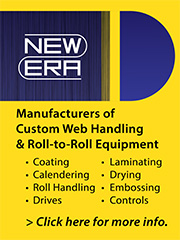The challenge of formulating FDA compliance.
- Published: May 01, 1996, By Bentley, David J., Jr.
Many application of adhesives, coatings, and inks for flexible packaging and other uses require compliance with regulations of the Food and Drug Administration (FDA). This agency regulates packaging in direct contact with food, because it is potentially an indirect food additive through possible migration to food. An adhesive, coating, or ink used in the packaging of a food item for human consumption must therefore conform to the applicable regulations of the FDA. The regulation may be as simple as 21 CFR 175,105, Adhesives, or as complex as 21 CFR 177.1630, High-temperature laminates. Specific regulations governing a particular application are usually available from the end-user. Legal advisors can provide information on compliance with the regulations.
There are more basic considerations, however. Do the FDA regulations influence the work of research, development, or technical service chemists involved in formulating a product for a food packaging application? Should these individuals be concerned with the regulations? Must formulators know the contents of the regulation? The answer to each of these questions is definitely "yes."
The best formulators are extremely creative individuals. They develop unique products by devising new combinations of ingredients in varying amounts to meet the end-use requirements of the application. A "blue-sky" approach where anything goes is the ideal working atmosphere for such formulators. Creativity should not have any fetters.
Unfortunately, regulations impose severe restrictions today on die latitude under which formulators can operate when die product they are developing will find use in a food packaging application. Before thinking about the solution or doing any work, a formulator should know the applicable FDA regulation. The next step is to read and understand that document, paying particular attention to a listing of allowable substances and any restrictions on using them.
An excellent example to cite is regulation 21 CFR 176.170, Components of paper and paper-board in contact with aqueous and fatty foods. This regulation contains multiple pages of columns for "List of substances, and "Limitations." In the column for substances, there are designations for polymers, plasticizers, and various other ingredients a formulating chemist might want b try. The other column presents restrictions concerning levels of use, types of applications allowed, and other conditions.
A chemist developing a material for use in an application to meet 21 SFR 1760170 would want to restrict his arsenal of possible ingredients to those listed. Incorporation of any ingredient not in the regulation into a newly developed product would usually mean the product would not be compliant. The formulator would therefore have wasted valuable development time.
Suppose, however, that all formulating efforts using the allowable ingredients fail to develop a satisfactory product. What if the only solution a creative chemist can find uses an ingredient that is not on the list of allowable substances in the FDA regulation? There are two solutions to allow use of die questionable additive. One is to prove that the application contains a functional barrier that prevents the total migration of the component into the food. "Total" means that extensive testing will be necessary. Such testing can be slow and expensive and may prove inconclusive.
Another alternative is to petition the FDA to allow the new material under the regulation. This approach requires considerable supporting data and will often take considerable time. Both avenues are usually unacceptable.
Do FDA regulations hinder the creativity of formulating chemists working on adhesives, coatings, and inks? The immediate answer might be that they do. A better answer is that they merely tax the abilities of ingenious formulators to a greater degree. The most competent chemists will read the application regulation, brainstorm, and invent a product using the listed ingredients to solve the problem.
Developing a new product to meet FDA regulations does not restrict the best formulators. Instead, it provides an excellent opportunity to best the competition by knowing the rules of the game and playing by them.







